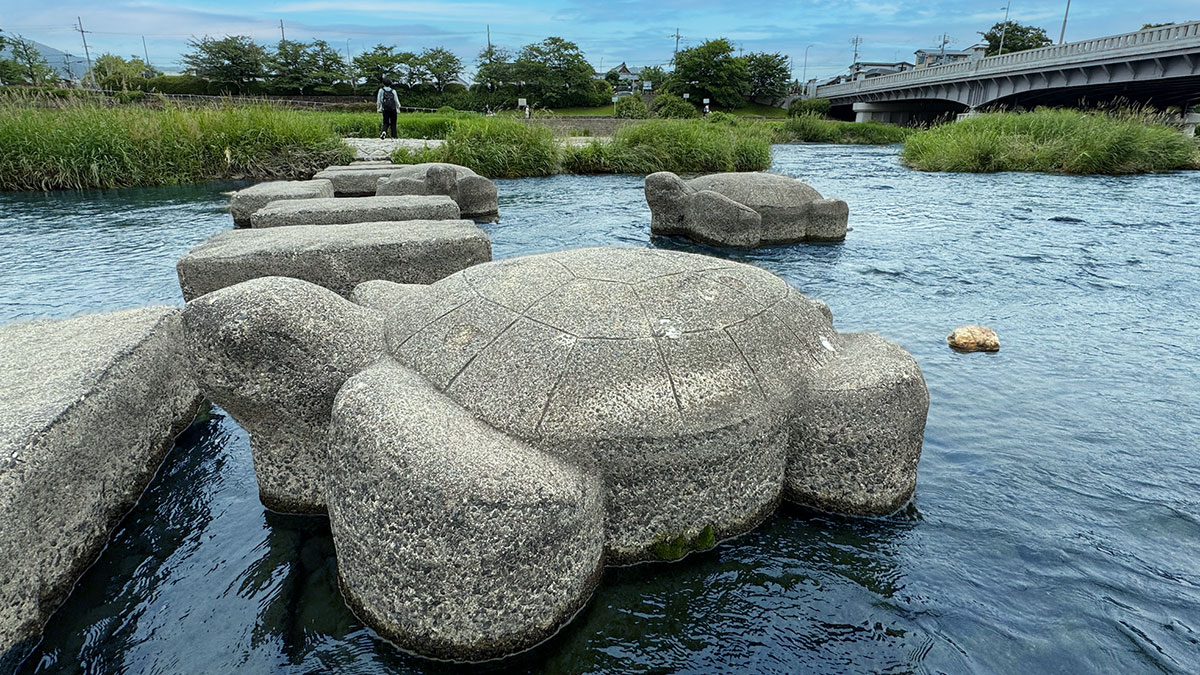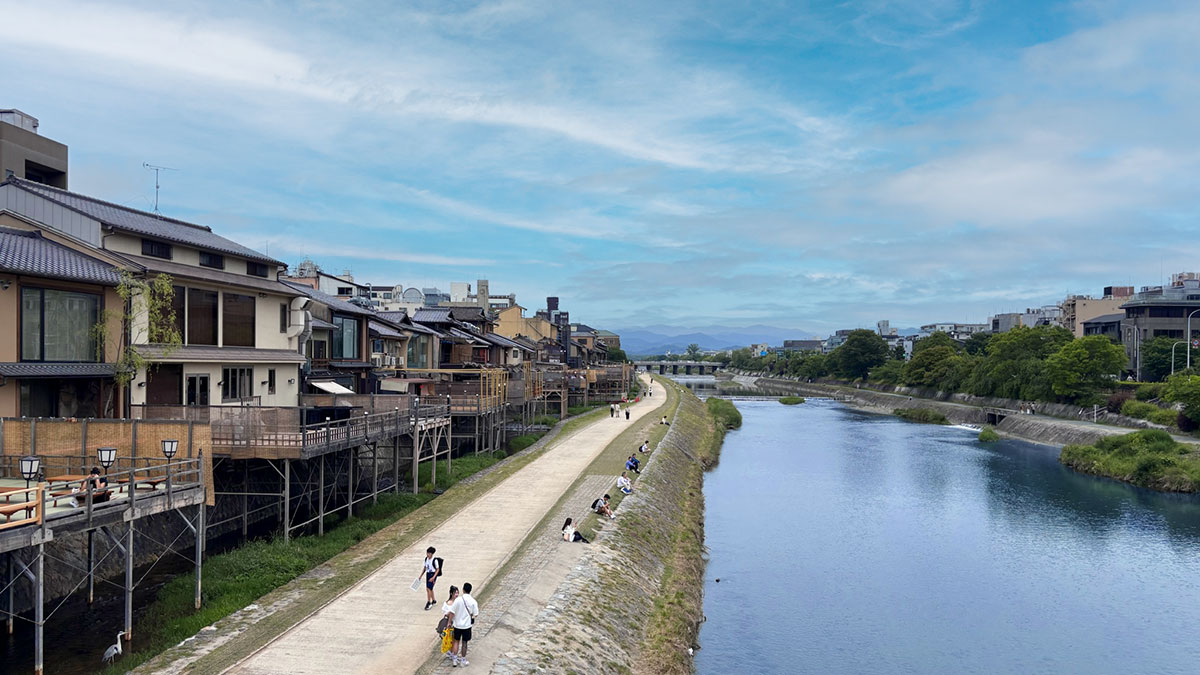In this issue of the column, we introduce the Kamo River—one of Kyoto’s most iconic locations, recommended by several faculty members for its scenic beauty and cultural significance.
A peaceful escape with friends and family
The Kamo River flows north to south right through Kyoto City and serves as a tranquil retreat not only for tourists but also for residents who pause to relax along its banks. The river's character changes depending on the area. Near famous tourist spots such as Shijo and Gion, riverside terraces known as kawadoko—platforms extending over the river—line the banks, offering visitors and shoppers a scenic place to rest. Further upstream, the atmosphere becomes more natural, with families and locals enjoying picnics, practicing musical instruments, and spending time freely in their own ways. The riverbanks are lush with trees, allowing visitors to enjoy seasonal landscapes throughout the year.
At the point where the Kamo River begins—where the Kamogawa and Takanogawa rivers merge—the shape resembles the Greek letter delta (Δ), and the area is known as the “Kamogawa Delta.” Here, turtle-shaped stepping stones called Kame-ishi allow people to cross to the opposite bank.
One researcher shares that they spends a leisurely day at the Kamogawa Delta with their children, while another describes walking along the river with friends, enjoying open conversation without concern for their surroundings.

A place where researchers could share ideas freely
The Kamo River is also a place where researchers from Ritsumeikan University engage in open conversations with international colleagues. Among Kyoto’s many representative spots, it stands out as a location where people can talk freely outside of restaurants. For one researcher, a discussion with a Danish colleague by the river led to a sabbatical in Copenhagen—making the Kamo River a place of personal and academic significance.
When visiting Kyoto, why not take a moment to pause by the Kamo River? Sit by the water, enjoy the peaceful atmosphere, and take in the beauty of Japan’s changing seasons. It might even spark new inspiration for your research.
